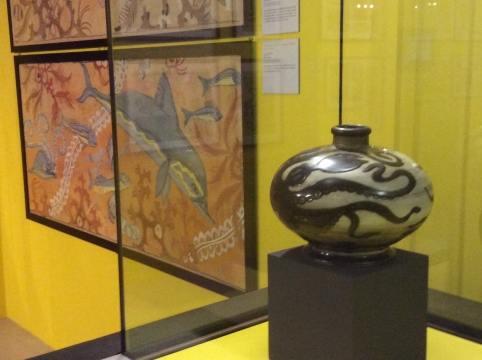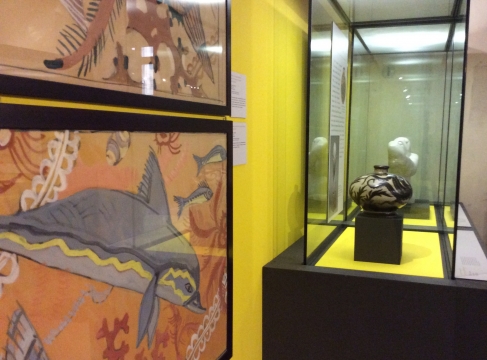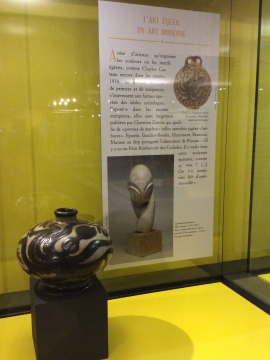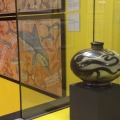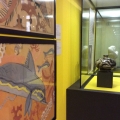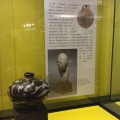The Musée d'Archéologie Nationale in Saint-Germain-en-Laye (France) has organised an exhibition devoted to the discovery of little-known objects from Ancient Greece. This trip into the past enables the visitor to admire original objects from the Neolithic and Bronze Ages, as well as some of the spectacular reproductions and works for which they provided a source of inspiration during the Art Nouveau and Art Deco periods.
Among the works on show is the vase ‘au poulpe’, one of the flagship vases from the Claire De Pauw - Marcel Stal collection, which was generously donated to the King Baudouin Foundation in 1999. The collection comprises over 800 pieces and is considered a reference for the work Charles Catteau designed for Boch Frères in La Louvière between 1907 and 1948.
Charles Catteau drew his inspiration from nature, but also from the motifs used in ancient and modern civilisations. On this so-called ‘vase au poulpe’ (a vase with an octopus motif), Catteau was inspired by the marine-style motif of Minoan ceramics from Gournia (Crete, c. 1500 BC). The potbellied body of the vase shows an enormous octopus with outstretched tentacles against a background of algae. Whilst the material used – enamelled stoneware – has nothing in common with that of the original vase, the tones of Catteau’s vase are similar to those used for Minoan ceramics, namely a pale, slightly speckled, beige background, decorated with a ‘burnt earth’ colour. This is the only neo-Minoan-inspired vase created by Charles Catteau, but it shows the interest there was in Aegean motifs during the 1930s, an interest created by the discovery of previously unknown civilisations around the Aegean Sea at the end of the 19th and early 20th centuries.
Organized chronologically, the exhibition invites the visitor to re-visit the discoveries of important archaeological sites such as Troy, Mycenae and Knossos and to reflect on the personalities of archaeologist-adventurers such as Heinrich Schliemann and Arthur Evans. The octopus vase is a testimony to the way in which the discovery of Aegean civilisations was perceived by the general public and artists at the beginning of the 20th century.
Practical information:
Musée d'Archéologie Nationale, Place Charles de Gaulle, 78100 Saint-Germain-en-Laye, France
From 4 October 2014 to 19 January 2015
Tuesdays to Sundays, from 10h to 17h
Closed on Mondays
Entrance: €4.50
